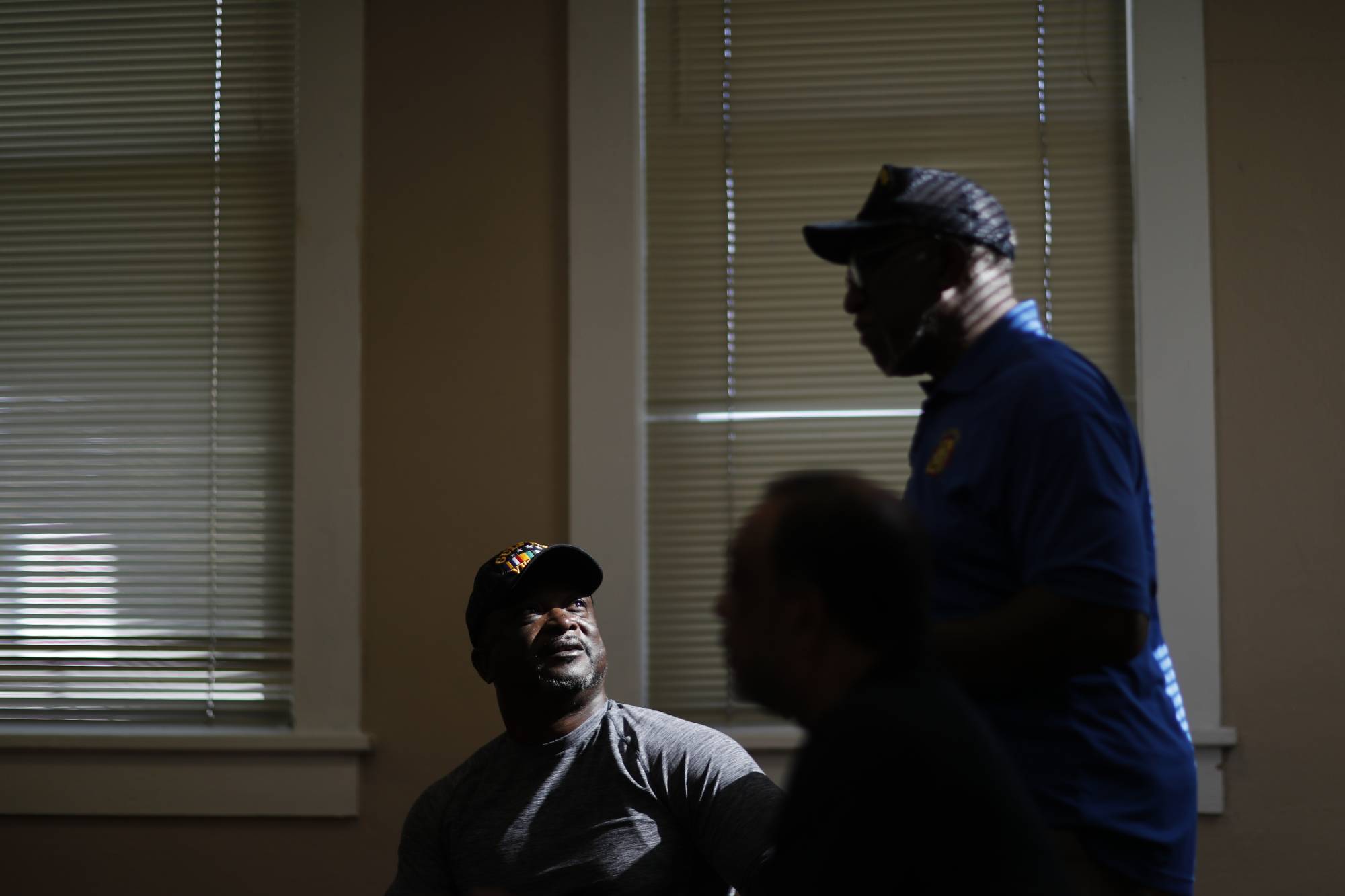Hubbard Radio Washington DC, LLC. All rights reserved. This website is not intended for users located within the European Economic Area.
Those military burn pit veterans have help in representing their claims
The Veterans Benefits Administration has started delivering disability payments to service members exposed to burn pits. But that isn't the end of the story acc...
Best listening experience is on Chrome, Firefox or Safari. Subscribe to Federal Drive’s daily audio interviews on Apple Podcasts or PodcastOne.
Now that the Veterans Benefits Administration has started delivering disability payments to service members exposed to burn pits, everything is hunky dory, right? Not according to Bart Stichman, whose organization is helping represent veterans with those claims. He’s the co-founder and special counsel at the National Veterans Legal Services Program and joined Federal Drive with Tom Temin to discuss.
Interview transcript:
Tom Temin: Bart, good to have you back.
Bart Stichman: Thanks for having me, Tom.
Tom Temin: And this has been a long battle of lobbying and veterans organizations trying to get this benefit for those exposed to the burn pits. And is the situation now resolved? The benefit is legal and they’re processing claims.
Bart Stichman: Well, it’s only just begun Tom. What the VA has done for the first time is recognize that there are three different types of respiratory conditions that are connected to the toxic fumes from burn pits in Iraq and Afghanistan, and Southwest Asia — and rhinitis, sinusitis and asthma. So veterans who contracted those diseases within 10 years of leaving Southwest Asia can get benefits. But those are only a few of the diseases that science shows are connected to the toxic fumes. And so that’s why there’re bills pending in Congress on both the House and Senate side to add a lot more diseases to the list of those that are presumed connected to burn pits.
Tom Temin: And what are some of those other ailments?
Bart Stichman: A lot of them are respiratory conditions, chronic bronchitis, chronic obstructive pulmonary disease, bronchialitis. But there are also cancers, respiratory cancers. We’re representing now a veteran who developed kidney cancer that scientists say is connected to the exposure. And the bills list sometimes up to 20 diseases that there if passed, would require the VA to pay compensation for somebody who served in Southwest Asia.
Tom Temin: And these are, as they stand now for the three respiratory areas, the asthma, rhinitis and sinusitis are presumed to be an ailment related to the burn pits if you have them within those 10 years. So all you have to do is basically walk in and sign up, or do you find that there’s still some work to do?
Bart Stichman: It’s much easier, but there’s still work to do. You have to actually have a diagnosis, and the VA will give you a medical exam of one of those three diseases. And then the record needs to show that you either were diagnosed within 10 years, or you had symptoms, which eventually were diagnosed with one of those three diseases within 10 years of discharge.
Tom Temin: And are you helping veterans through this process? Do you find that they, some of them at least, need some assistance to get through the process?
Bart Stichman: Absolutely. We recently opened the burn pits claims assistance program in our organization, National Veterans Legal Services Program. Those exposed to burn pits can apply for free representation at www.nvlsp.org. And veterans, we’re accepting cases not just for veterans who have one of those three diseases we’ve talked about, but other diseases because we can try to win with using a medical expert who will say that in his or her expert opinion, they believe the veterans kidney disease, or whatever it is, is connected to the toxic fumes from burn pits.
Tom Temin: And if the VA adjudicator says no, what is the recourse?
Bart Stichman: Recourse is to appeal further in the VA system to the Board of Veterans Appeals and eventually to the US Court of Appeals for Veterans Claims, which has the power to overturn the decision if the weight of the evidence is strongly against what the VA found, and that can be overturned by the veterans court.
Tom Temin: We’re speaking with Bart Stichman, he’s co-founder and special counsel at the National Veterans Legal Services Program. And looking at the backlogs that were at VBA, and they wax and wane over the years, is it your sense that the backlogs for the disability appeals claims, which were really getting out of hand for a while there, are under control now by VBA?
Bart Stichman: Much more under control, the problem is not solved, they’re still behind, but it’s not as extreme as it was before. Partly because Congress in 2017 amended the system, it created a more streamlined system that made it easier for the VA to more quickly decide claims.
Tom Temin: And with respect to the burn pits, these cover the Gulf War back during the first Bush administration as well as Afghanistan and Iraq? Where is your sense that most of the claims are coming from, which wars?
Bart Stichman: More coming from, because of more troops, from operation OIF and OEF, Iraq and Afghanistan from 9/11 on.
Tom Temin: Right, because those went on for 15-20 years.
Bart Stichman: Exactly.
Tom Temin: And is the military still doing burn pits? Have you watched upstream to see if they’re even operating those kinds of measures anymore?
Bart Stichman: There’ss a big push to get them to bend them all together. I don’t know what the current status is, but there’s a lot of pressure on not using that anymore. You can build incinerators that would solve the problem.
Tom Temin: Alright. And while we have you, you have also launched a new class action suit that was just certified. And you’ve got some pro-bono counsel from a big law firm helping here with the wrongful denial of military disability retirement from the DoD side. What is going on? Why is that suit launched?
Bart Stichman: Well, there’s a long term problem with the military trying to avoid the cost of war for military disability retirement benefits. So you can get those benefits, if the military sees that you have a disability while you’re in service, and you’re unfit for continued service, then it runs you through a process to decide either whether you should get military disability retirement or lesser benefit, military separation. And military disability retirement is a great program, you not only get monthly disability payments, but you get TRICARE, the Military Health Care Program entitlement for the rest of the veterans life, the rest of the spouses life, and the children while they’re minors. And too often the military’s leaning to not giving military disability retirement, but instead giving the lesser benefit, even though you should be entitled to military disability retirement. So that is what this case is about. The Navy and Marine Corps for two years had a policy that they will only consider the medical conditions that are on a particular form to decide whether you are unfit for continued service, number one. And number two, whether your disability ratings combined for your unfitting conditions are 30% or more. And so there obviously the more conditions that are unfitting get you a much better chance to reach the 30% combined disability rating, which is the cutoff you need to make for military disability retirement. So instead of analyzing six diseases or injuries, and combining the disability ratings for them to make it easier to get to 30%, with the Navy and Marine Corps, what we’re doing is saying only the two or whatever number some board put on a form will be considered.
Tom Temin: That’s the properly referred policy, in other words.
Bart Stichman: Exactly. The properly referred policy, if it’s on the form, we’ll consider it. Even though you complained about five other diseases or injuries, if it’s not on the form, we won’t consider it. That’s what the challenge is. And recently on October 27, the US District Court certified that case is a class action. The Navy and Marine Corps admit that there are over 3,600 people who fit the definition of the class and could benefit. We think it’s thousand more but we’ll see as the case goes on.
Tom Temin: And this will probably take some time then, it’s just the beginning of the battle it sounds like.
Bart Stichman: That’s true. We’re partway through. First question is should this be a class action? But the next question is going to be is the policy illegal in the first place? And that’s the battle to come.
Tom Temin: Bart Stichman is co-founder and special counsel at the National Veterans Legal Services program. Thanks so much.
Bart Stichman: Thank you, Tom. Good to talk to you.
Copyright © 2024 Federal News Network. All rights reserved. This website is not intended for users located within the European Economic Area.
Tom Temin
Tom Temin is host of the Federal Drive and has been providing insight on federal technology and management issues for more than 30 years.
Follow @tteminWFED





